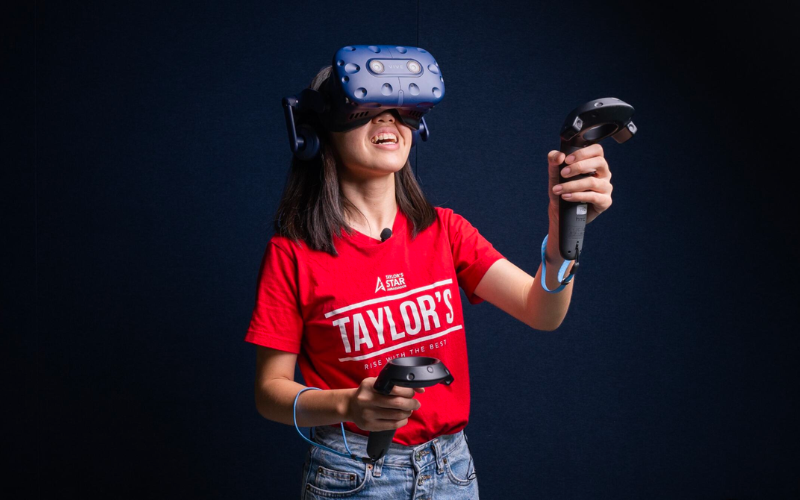Extended reality — virtual reality, augmented reality, and mixed reality — has become a part of our reality. We discuss how it will change what we know.
{{ vm.tagsGroup }}
04 Aug 2022
5 Min Read
Ailyn Low (Editor)
Extended reality — virtual reality, augmented reality, and mixed reality — has become a part of our reality. We discuss how it will change what we know.
In the past, technology has mostly influenced jobs in ways that make them more efficient — think how computers made administrative work faster or how fax machines replaced carbon copies.
Thanks to Extended Reality (XR) tech like virtual reality (VR), augmented reality (AR), mixed reality (MR), and more, the next wave of technological change is going to bring about change. It'll help us work smarter and more efficiently with our time and resources while giving us a new perspective on what we do each day. As the rise of XR hugely impacts the way we work and how we find work, we need to also start understanding how this impacts our reality.
The working landscape has been changing since the pandemic hit us globally. While online remote working adapts methods of communication to continue working from home (Thank you, Zoom!), the idea of presence via a video call is still different from being physically there. In comes the different XR technologies.
“Virtual collaborative tools provide the working environment experience that really feels as if everyone is there, albeit virtually,“ Taylor’s XR Specialist, Mr Faisal Athar, explained.
Dr Charles Sharma Naidu, Director of Taylor’s VORTEX XR Lab, added, “The working landscape, job roles, and industry are evolving, where technology and phrases like ‘working on site’, ‘travelling to locations’, and ‘attend and explore the campus’ are redefined by XR technologies extending into our reality in ways we never thought possible.“
As XR is continuously incorporated within different industries and companies, we need to upgrade and understand XR, along with its development, to equip ourselves with an edge for future demands.
As the XR industry constantly grows and evolves, so do the demands of the different roles required. While it does take away some current roles, it also creates more jobs, including those entirely new to the field.
“The demands of this reality require roles such as 3D Environment Artists, 3D Concept Artists, VR and AR designers, XR Project managers, Unreal Engine or 3D Engine Specialists, Metaverse Designers, and Business Administrators… the list is non-exhaustive! We’d also see a spike in computer science, engineering, and creative-based disciplines intersecting with each other, creating more opportunities along with the development of hardware and software technologies,” Dr Charles added.
With these emerging roles, there’s the requirement of understanding software, like Unity and Unreal Engine extending their capabilities to enable XR development when they were mostly used for software and games development, as well as an understanding of a new mindset to apply XR in the industry’s development.
Mr Faisal elaborated on how understanding this will help. “Creative technologists are able to produce newer ideas when utilising emerging technology for the future of their company, whether it directly applies to their products or affects their internal procedures. XR production, which combines XR and film production, creating real-time Extended Reality production requires a whole crew with a specific set of skills.”
Undoubtedly, there’s a need for a new breed of developers and designers in the coming years as the industry rapidly evolves throughout the world. As such, students nowadays need to expose themselves to these innovations and spend more time filling future-proof jobs.
Which begs the question, how will education play a part?
It’s clear that the future is hybrid and we’re moving towards a symbiotic relationship between our realities as technology facilitates it.
The importance of educational institutions is then crucial as they become the first providers of XR facilities, allowing students and teachers to try new experiences and bring them to the next level.
According to Dr Charles, education has always been about how we want learners to see and understand what they’re learning. “XR technology provides the abilities to experience learning on a different scale and to be present for social interactions in a virtual environment or classroom.”
“Through a persistent learning metaverse, educators and students can seamlessly explore, visit, participate, and create anytime, anywhere in various Metaworlds which bridges our own reality. Something that has already begun with VORTEX,” he elaborated.
Ultimately, education institutions play a significant role in providing future working staff with the necessary knowledge of XR and the metaverse.
Mr Faisal shared how we can expect research that goes beyond the spectrum of educational tools and into virtual collaborative tools or gaming environments for teaching.
“Teachers and students will be able to conduct their classes virtually using cross-platform collaboration tools and be together in newer ways while still being remote. Subjects and programmes will incorporate more XR-based experiences to evaluate students' work or produce new types of assignments aimed to equip students with future skills.”
The future of the industry is filled with growth potential.
As virtual and immersive experiences become more apparent due to groundbreaking and immersive multiplayer gaming technologies, it’s understandable how they’ll continue to be a big part of a hybrid future.
“It’s our job to help others contextualise and understand the usage of different technologies and drive creativity to create engaging and immersive experiences from existing research and industrial findings,” Mr Faisal expressed.
The question now is, will we be able to create a persistent learning metaverse that provides the same immersive experience and excitement in education? How fast can we do this with the reality of these technologies in Malaysia? Either way, we're excited to see a virtual world continuously extending and influencing our reality today.


